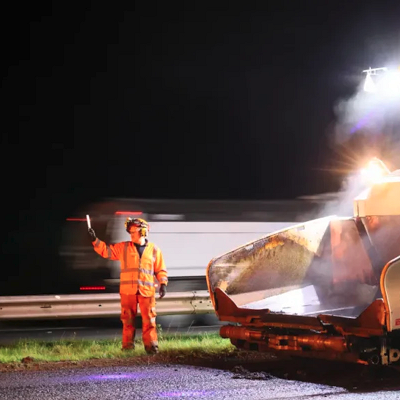First Graphene Ltd led consortium of partners has been awarded a UK Government grant to develop high performance graphene-enhanced cement.
The grant – worth some A$360,206 – was awarded by the UK Government’s innovation agency, Innovate UK to the consortium, which includes construction materials group Breedon Cement Ltd, construction and regeneration group Morgan Sindall Construction & Infrastructure Ltd, and the University of Manchester’s Department of Mechanical, Civil and Aerospace Engineering.
“We are delighted to be working with industry-leading partners Breedon and Morgan Sindall, as well as the University of Manchester, which together represent a powerful consortium of producers, users, specifiers and researchers along the concrete supply chain,” First Graphene managing director and CEO Michael Bell said.
“This is an excellent opportunity to develop graphene-enhanced concrete products at scale with exceptional visibility across the cement and construction sectors.
“It is also a major achievement to have secured this funding in a very competitive environment, which is testament to the consortium’s manufacturing and engineering capabilities.
“It is important to note that this is one of multiple collaborations with industry that the company is undertaking with a view to building our pipeline of commercial opportunities over the coming months.”
Cutting carbon emissions
The cement industry, led by the Global Cement and Concrete Association on behalf of 40 leading cement and concrete manufacturers, has committed to cutting carbon emissions by 25% by 2030.
Clinker, one of the binding and strengthening agents in cement, is the main culprit of these emissions and the UK cement industry is actively exploring methods to produce cements with lower clinker factor to increase the sustainability of cement products.
First Graphene means to address this issue with its cement additive PureGRAPH® products, which have been shown through external testing at international standards to enhance compressive strength by 34% and tensile strength of cement mortar by 27%, reducing the need for unsustainable clinker additives.
Collaboration with the goal of sustainability
“We’re extremely proud to be part of the consortium led by First-Graphene to develop graphene-enhanced, low-carbon cement, which could ultimately reduce the amount of clinker in concrete and reduce CO2 emissions,” Breedon Cement cement and products managing director Jude Lagan said.
“We recognise that cement is an essential ingredient of our infrastructure, and we’re committed to developing more sustainable products for all our customers.
“It’s essential that Breedon can make a material difference to places, and we want to show how we look at the whole life impacts of our products, and how we collaborate and innovate to mitigate the effects of climate change.”
The project will develop a new graphene-enhanced cement (GR-CEM) product using PureGRAPH additives.
GR-CEM will represent a step-up in performance, enabling a reduction in the clinker factor and the use of alternative, lower carbon supplementary materials such as limestone and calcined clay to reduce the overall CO2 burden.
The project will also involve optimising graphene dispersion and injection technologies, as well as validating the economic viability, safety and specific CO2 reduction impacts of GR-CEM.
Multiple benefits in real-world applications
Dr Akilu Yunusa-Kaltungo from the University of Manchester, the Project’s Principal Scientific Researcher, said: “We are looking forward to collaborating with our industrial partners.
“Collectively, we are a diverse team with a very wide range of scientific, commercial and industrial experience and knowledge.
“The University of Manchester looks forward to putting our scientific expertise to good use by engaging with the consortium to develop a range of graphene-enhanced products that will have multiple benefits in real-world applications.”
Read the original article on Proactive Investors.







